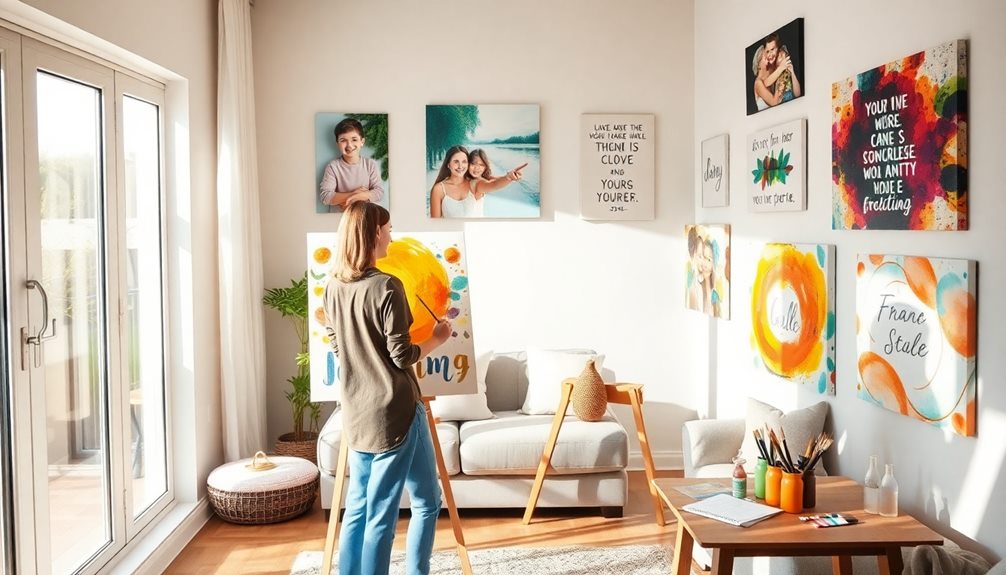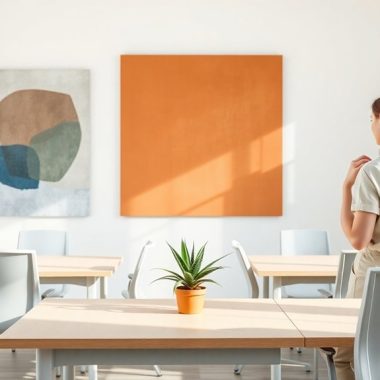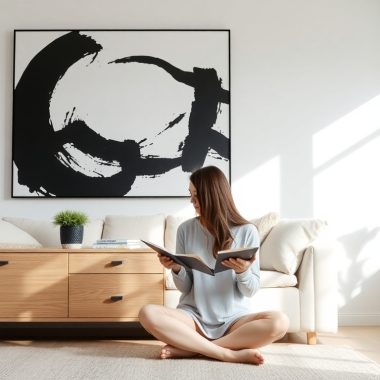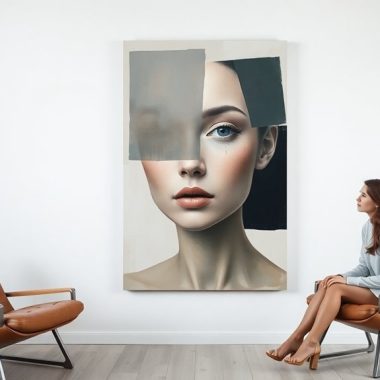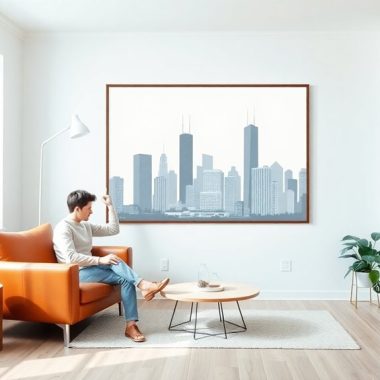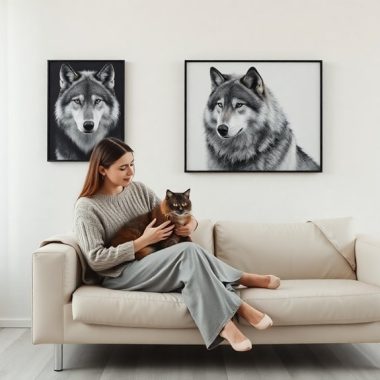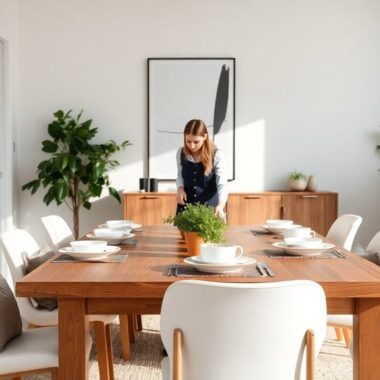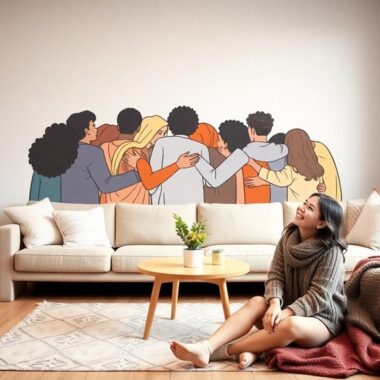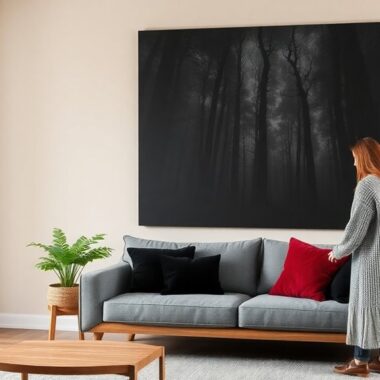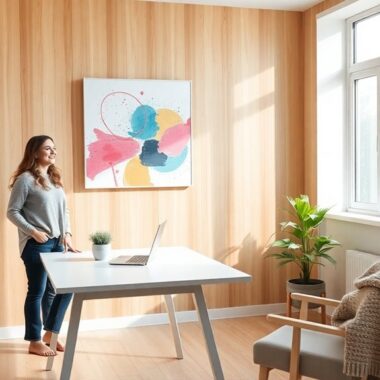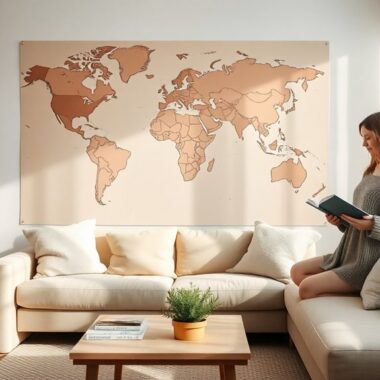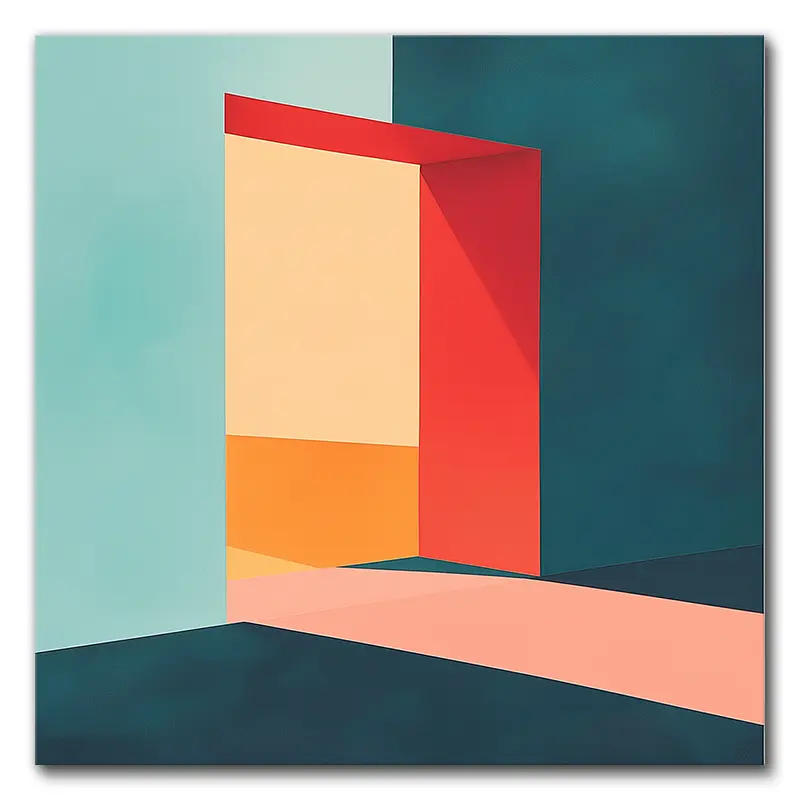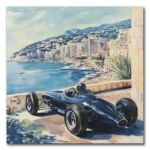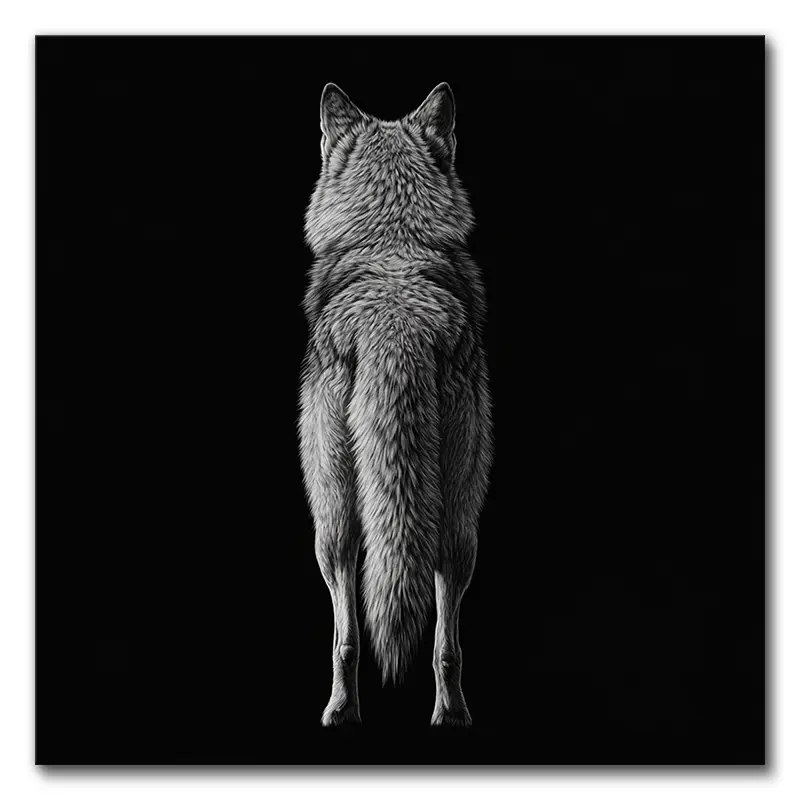Have you ever felt trapped within the suffocating embrace of blank, lifeless walls? Your environment isn't just a backdrop; it's a silent psychological architect shaping your mental landscape. Those seemingly innocuous surfaces are more than mere structural boundaries—they're potential triggers for emotional stagnation and cognitive dulling. What if the walls surrounding you are subtly eroding your mental resilience, draining your creativity, and undermining your psychological well-being? The connection between your physical space and inner emotional terrain runs deeper than you might imagine, and understanding this relationship could be the first step toward transforming your mental health.
The Color Psychology Paradigm
When it comes to color psychology, the walls surrounding us aren't just passive backdrops—they're active influencers of our mental and emotional states. Those dull, lifeless walls you're staring at right now? They're secretly wreaking havoc on your psychological well-being, and you probably don't even realize it.
Imagine walking into a room with gray, monotonous walls. It's like entering a soul-crushing vortex of boredom that sucks the life right out of you. But swap those dull walls for some vibrant relaxing abstract wall art, and suddenly, your brain lights up like a damn Christmas tree. Colors aren't just visual experiences; they're emotional triggers that can transform your entire mental landscape.
Nature wall art, for instance, isn't just a decorative choice—it's a mental health hack. Those serene landscapes and verdant forest scenes can lower your stress levels faster than a meditation app. Your brain craves visual stimulation, and zen wall art provides exactly that: a calm, therapeutic environment that whispers sweet nothings to your overworked neurons.
Research consistently shows that color has a profound psychological impact. Blue tones can reduce anxiety, green shades promote relaxation, and warm colors like yellow can boost your mood. The Natural Wonders Wall Art collection offers a perfect example of how carefully curated art pieces can transform your living space into a sanctuary of emotional well-being.
So why are you settling for walls that look like they've been dipped in despair?
Stop tolerating your depressing environment. Your walls are more than just structural boundaries—they're canvases for mental wellness. It's time to paint your way to psychological freedom.
Emotional Impact of Monotonous Spaces
Blank walls aren't just visually uninspiring—they're psychological quicksand that can drag your mental state into a bottomless pit of emotional monotony. When you're surrounded by stark, lifeless spaces, your brain starts to mirror that emptiness. It's like your emotional landscape becomes as barren and depressing as the walls around you, sucking the creativity and joy right out of your soul.
Imagine walking into a room with nothing but beige walls and zero personality. How the hell are you supposed to feel motivated or inspired? These monotonous spaces are emotional vampires, draining your mental energy and leaving you feeling flat, uninspired, and honestly, pretty damn miserable.
Your environment isn't just a physical space—it's a psychological ecosystem that directly impacts your mood, productivity, and mental well-being. Dull spaces create dull thoughts. They trap you in a mental prison of boredom and stagnation, making it nearly impossible to feel excited or energized about anything.
Think about it: color, texture, and visual stimulation are like mental nutrients. Without them, your brain starts to wither. Those blank walls aren't just boring—they're actively harmful to your psychological health. They're silently sabotaging your creativity, crushing your spirit, and making you feel like you're trapped in some soul-sucking purgatory of visual blandness.
Home gym wall art can transform these lifeless spaces into vibrant environments that spark motivation and emotional energy.
Wake up and realize that your environment matters. Break free from the monotony. Your mental health depends on it.
Creativity and Environmental Stimulation
Every creative spark thrives on environmental richness, transforming bare spaces into vibrant canvases of mental exploration. When your walls are dull and lifeless, they're basically sucking the creative juice right out of your brain.
Think about it: staring at a blank, beige wall is about as inspiring as watching paint dry – which, ironically, is exactly what you're doing. Your brain craves stimulation like a caffeine addict needs their morning espresso. Colorful, dynamic environments aren't just pretty; they're psychological fuel.
Research shows that visual complexity triggers neural pathways that enhance cognitive flexibility and imaginative thinking. Those bland walls? They're creativity's worst nightmare.
Imagine walking into a room that feels like a mental prison. Gray. Monotonous. Suffocating. Now contrast that with a space bursting with artwork, vibrant colors, and interesting textures. Artistic abstract wall art can transform your environment from mundane to inspiring, offering visual narratives that spark emotional and cognitive engagement.
Which environment would make you want to brainstorm, create, or solve complex problems? Exactly.
You don't need to be an interior design guru to transform your space. Hang some funky posters, splash some color on the walls, or create a gallery of personal memories.
Hell, even random postcards or quirky prints can break the monotony. Your environment should reflect your inner landscape – wild, unpredictable, and bursting with potential.
Don't let dull walls rob you of your creative spirit. Your mental workspace is a direct reflection of your cognitive playground. Stimulate it, challenge it, and watch your creativity explode.
Stress Responses to Bland Environments
Your stress response to bland environments isn't just imaginary. Neuroscientific research shows that visual monotony directly impacts cortisol levels and triggers a cascade of physiological reactions. Hummingbird art's vibrant colors can serve as a powerful antidote to visual stagnation, offering dynamic visual stimulation that counters psychological numbness.
- *Increased cortisol production*: Bland environments signal potential threat, causing your body to release stress hormones.
- *Reduced cognitive flexibility*: Lack of visual diversity shrinks your brain's ability to problem-solve creatively.
- *Emotional suppression*: Monotonous spaces drain emotional energy, leading to psychological numbness.
Imagine spending eight hours daily in a room that looks like a prison cell. Your brain's literally screaming for stimulation, desperately searching for something—anything—interesting to engage with. Those beige walls aren't neutral; they're psychological kryptonite.
Chronic exposure to such environments can lead to seriously bad mental health outcomes. Depression, anxiety, and cognitive fatigue aren't just potential risks—they're probable consequences. Your mind needs visual complexity like your lungs need oxygen.
The solution isn't complicated. Add color. Introduce artwork. Bring in plants. Break the monotony before it breaks you. Your mental health isn't a joke, and those dull walls are waging a silent war against your psychological well-being.
Neurological Effects of Wall Design
Bombarded by sensory input, your brain constantly interprets environmental signals, and wall design plays a surprisingly crucial role in neurological processing. Your visual cortex doesn't just passively receive wall colors and patterns—it actively responds to them, triggering complex neurochemical cascades that influence mood, stress levels, and cognitive performance. Abstract wall art can serve as a potent neurological stimulus, offering visual complexity that engages multiple sensory processing centers. When you're surrounded by bland, monotonous walls, your brain experiences a kind of sensory deprivation that can lead to decreased dopamine production. Dull gray or beige surfaces fundamentally tell your neurons, "Nothing interesting happening here," which can spark feelings of depression and mental fatigue. It's like your brain's creativity gets suffocated by visual boredom. Conversely, strategically designed walls with engaging colors, textures, and visual complexity can stimulate neural pathways. Warm colors like orange and yellow can activate your limbic system, promoting feelings of comfort and excitement. Geometric patterns or nature-inspired designs can trigger positive neurological responses, increasing serotonin production and reducing cortisol levels. Your brain craves stimulation, and wall design isn't just decorative—it's a powerful neurological intervention. Thoughtful wall aesthetics can literally reshape your neural connections, promoting mental flexibility, reducing stress, and enhancing cognitive function.
Mental Performance and Spatial Perception
Beyond neurological stimulation, wall design profoundly impacts how you perceive and navigate spatial environments. Your brain doesn't just passively observe walls—it actively interprets them as critical spatial cues that shape cognitive performance and psychological well-being. Nature wall art can transform dull spaces into dynamic cognitive landscapes that stimulate mental engagement.
When you're surrounded by uninspired, monotonous walls, your brain struggles to process spatial information effectively. It's like being trapped in a mental fog where depth, dimension, and direction become frustratingly unclear. Dull walls aren't just boring; they're cognitive roadblocks that mess with your mental performance.
Here's how wall design screws with your spatial perception:
- Cognitive Mapping: Bland environments disrupt your brain's ability to create mental maps, making navigation and spatial reasoning more challenging.
- Attention Span: Visually unstimulating spaces reduce cognitive engagement, causing your mind to drift and lose focus faster than a distracted squirrel.
- Psychological Orientation: Poorly designed walls can create feelings of disorientation, anxiety, and mental fatigue.
Your spatial perception isn't just some abstract concept—it's a critical brain function that determines how you interact with your environment. Imagine walking into a room where every wall looks identical, where depth and dimension blur into a mind-numbing sameness. That's not just boring; it's a full-blown assault on your cognitive capabilities.
Smart wall design isn't about making things pretty—it's about creating environments that keep your brain sharp, engaged, and mentally agile. So ditch those soul-crushing, monotonous walls and embrace spaces that challenge and stimulate your mind.
Psychological Recovery Through Visual Design
When you're mentally exhausted, your environment can be a powerful healing tool. Visual design isn't just about looking pretty—it's about creating spaces that actively support your psychological recovery. Sunflower wall art can transform a dull space into a vibrant source of mental rejuvenation.
Think of your walls as more than just structural barriers; they're potential therapeutic canvases that can dramatically influence your mental state.
Color psychology isn't some hippie mumbo-jumbo—it's legit science. Soft blues can calm your racing thoughts, while warm oranges can inject energy into your depleted spirit.
Imagine walking into a room that instantly makes you feel more centered, more alive. That's not magic; that's intentional design working its psychological magic.
Strategic visual elements can trigger neural pathways that promote relaxation and mental restoration. Fractal patterns found in nature, like gentle wave designs or leaf-inspired artwork, can subconsciously reduce stress hormones.
Your brain craves visual harmony, and when you provide it, you're fundamentally giving your mental health a much-needed massage.
Don't underestimate texture, either. Smooth, organic lines can feel soothing, while intentional visual rhythm can help reset your overwhelmed nervous system.
Your environment isn't just a passive background—it's an active participant in your mental wellness journey.
Transforming Spaces for Mental Wellness
By reimagining your living spaces, you can create powerful mental wellness environments that support psychological healing and emotional resilience. Your walls aren't just passive backgrounds; they're active participants in your mental health journey. Hibiscus wall art can serve as a transformative element that introduces vibrant colors and tropical themes to elevate your psychological landscape.
Think of them as silent therapists, waiting to transform your psychological landscape with strategic design interventions.
Here's how you can revolutionize your spaces for mental wellness:
- Color Psychology: Select wall colors that trigger positive emotional responses, like calming blues or energizing yellows that subtly shift your mood and perception.
- Texture and Depth: Incorporate varied textures and dimensional elements that stimulate sensory engagement and break visual monotony.
- Personal Narrative Spaces: Design walls that reflect your personal story, aspirations, and healing journey through meaningful artwork, photographs, and inspirational elements.
Dull, monochromatic walls are psychological kryptonite. They drain your energy, suppress creativity, and reinforce emotional stagnation.
Imagine walking into a room that feels like a giant, suffocating beige blanket – that's not healing, that's psychological torture.
Your environment speaks a language your subconscious understands. Every color, texture, and visual element communicates something profound.
Bland spaces scream "give up," while thoughtfully designed environments whisper "you've got this."
Don't settle for mental health mediocrity. Transform your walls into dynamic, supportive canvases that actively participate in your wellness.
Break free from institutional grays and depressing neutrals. Your mental health deserves vibrant, intentional spaces that celebrate resilience, growth, and personal transformation.
Final Thoughts
Don't let your walls imprison your mind any longer! It's time to break free from the monochromatic monotony that's been draining your mental energy. Transform your space with intentional design, and you'll reveal a whole new domain of psychological potential. Your environment isn't just a backdrop—it's a powerful catalyst for mental wellness. At VerVeLush, we specialize in curating transformative art and canvas prints that breathe life into your cognitive landscape. Our carefully selected collections are designed to inspire, heal, and elevate your mental space, helping you reclaim your creative spirit. So go forth, paint boldly, and let VerVeLush be your partner in designing a vibrant, psychologically empowering environment like a Renaissance maverick!

